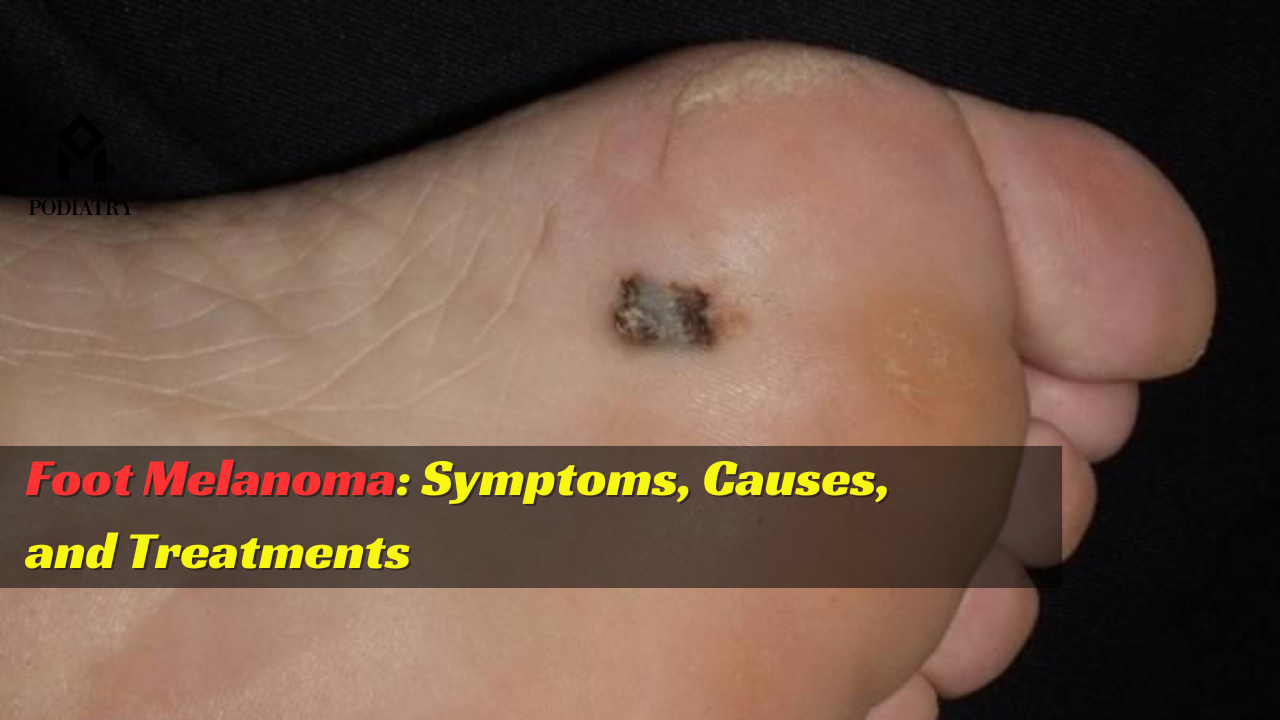Foot melanoma, though less common than melanoma on other parts of the body, can pose a significant threat to foot health and overall well-being. In this informative guide, we’ll delve into the intricacies of foot melanoma, exploring its symptoms, causes, risk factors, and available treatment options. Armed with knowledge and awareness, you can take proactive steps towards early detection and effective management of this potentially serious condition.
Understanding Foot Melanoma: Unraveling the Mystery
Melanoma is a type of skin cancer that originates in melanocytes, the cells responsible for producing melanin, the pigment that gives skin its color. When melanocytes mutate and grow uncontrollably, they can form malignant tumors, leading to melanoma. While melanoma can occur anywhere on the body, including the feet, it often goes unnoticed or misdiagnosed due to its location and resemblance to benign skin lesions.
Recognizing the Signs and Symptoms of Foot Melanoma
Early detection is key to successfully treating foot melanoma. Be vigilant and seek medical attention if you notice any of the following warning signs:
- Unusual or Changing Moles: Keep an eye on moles or pigmented lesions on your feet, especially if they exhibit irregular borders, uneven coloration, or changes in size or shape.
- New Growth or Sore: Pay attention to any new lumps, bumps, or sores on your feet that don’t heal within a reasonable timeframe.
- Persistent Itching or Bleeding: If you experience persistent itching, tenderness, or bleeding in a particular area of your foot, it could be a cause for concern.
Understanding the Risk Factors for Foot Melanoma
While anyone can develop foot melanoma, certain factors may increase your risk:
- Excessive Sun Exposure: Prolonged exposure to ultraviolet (UV) radiation from the sun or tanning beds can increase your risk of developing melanoma, even on areas of the body that are not typically exposed to sunlight, such as the soles of the feet.
- Personal or Family History: Individuals with a personal or family history of melanoma or other types of skin cancer may have an elevated risk of developing foot melanoma.
- Fair Skin: People with fair skin, light-colored eyes, and a tendency to burn rather than tan are more susceptible to melanoma.
Consulting with a Podiatrist: The Importance of Early Detection and Diagnosis
If you suspect you may have foot melanoma or notice any concerning changes in your skin, it’s crucial to seek prompt evaluation from a qualified Podiatrist. Your Podiatrist can conduct a thorough examination, perform a biopsy if necessary, and provide expert guidance on the most appropriate course of action.
Exploring Treatment Options for Foot Melanoma
Treatment for foot melanoma may vary depending on factors such as the stage of the cancer, the size and location of the tumor, and the individual’s overall health. Common treatment modalities may include:
- Surgical Excision: Surgical removal of the melanoma lesion and surrounding tissue may be recommended to ensure complete removal of the cancerous cells.
- Mohs Surgery: A specialized surgical technique called Mohs surgery may be employed for melanomas located on the feet or other areas where tissue preservation is critical.
- Chemotherapy or Immunotherapy: In cases where melanoma has spread beyond the skin, systemic treatments such as chemotherapy or immunotherapy may be utilized to target and destroy cancer cells.
Maintaining Vigilance and Promoting Prevention
In addition to seeking timely medical care, there are steps you can take to reduce your risk of foot melanoma and promote overall skin health:
- Sun Protection: Practice sun safety measures by wearing sunscreen with a high SPF, seeking shade during peak sun hours, and wearing protective clothing and footwear.
- Self-Examination: Conduct regular self-examinations of your feet, including the soles, heels, and between the toes, to monitor for any changes or abnormalities.
- Professional Skin Checks: Schedule periodic skin checks with your Podiatrist or dermatologist to screen for skin cancer and detect any suspicious lesions early.
Conclusion: Empowering Awareness and Action
In conclusion, foot melanoma is a serious condition that warrants attention and proactive measures to promote early detection and effective treatment. By familiarizing yourself with the signs and symptoms of foot melanoma, understanding your risk factors, and consulting with a qualified Podiatrist, you can take control of your foot health and minimize the impact of this potentially life-threatening disease.



